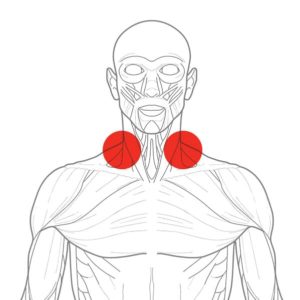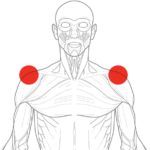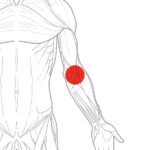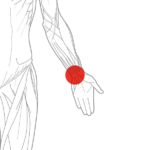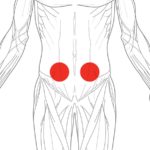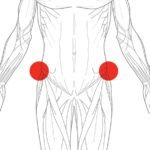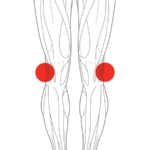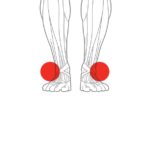3 Common BJJ Injuries (and How to Prevent Them)
Heather Raftery
Three of the most common BJJ injuries occur in the neck and shoulder. Here’s what causes them, and how you can prevent them using the BJJ Prehab Program.
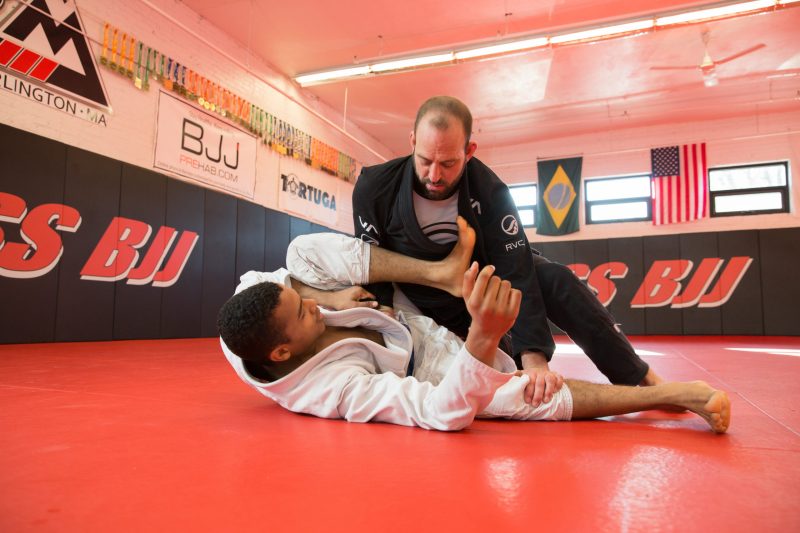
3 Common BJJ Injuries and 3 BJJ Prehab Exercises to Help
There is a simple explanation for the high incidence of jiu-jitsu related injuries. If you think about it, few other sports in the world put you in as many weird, contorted, inverted and uncomfortable positions as jiu-jitsu does. Think about common knee injuries related to playing De la Riva and shoulder injuries from an aggressive shoulder lock. Or consider less common BJJ injuries, such as concussions or broken bones. Training BJJ really takes a toll on your body.
In fact, you could write a book on all the different injuries that could happen in jiu-jitsu. What are they and why do they happen? You could include a comprehensive look into the specific muscles, tendons, nerve structures that are affected, and how to fix them.
For those who have only a few minutes to spare, we’ve summarized three of the more common neck and shoulder injuries in BJJ. Read on to see what they are and what causes them. We’ve also included some BJJ Prehab exercise that can help prevent and alleviate them.
Common BJJ Injury #1
Neck: Facet Syndrome
Facet syndrome is basically a fancy word for a severely tweaked neck. We’ve all had this happen once if not many times over the course of our training. Maybe a Josh Hinger fan – or Hinger himself – was hanging on your neck. As you desperately fought off a guillotine, you twisted your neck trying to avoid the choke. Or maybe you found yourself flat on your back under someone’s side control, their shoulder forcing your head in the opposite direction. A vicious double under stack pass will also do the trick. As will any number of wrestling takedowns in which your head and neck hit the mat first.
Afterwards, you find yourself unable to look in a certain direction without pain, or your neck feels “locked up”. Maybe you feel some tingling, muscle spasms and sensitivity in the area. Of course, your first action should be to stop training. Find some ice and maybe take some anti-inflammatory medicine, such as ibuprofen (Advil, Motrin, etc.) or another NSAID of choice.
How to Prevent it
What could you have done to strengthen your neck and shoulders and better prepare yourself withstand the above scenarios? Physical therapists call it the YTWL Exercise. No, it’s not an acronym for anything (I checked). It’s named for the successive positioning of your arms as you move through the exercise.
Common BJJ Injury #2
Shoulder: Impingement Syndrome
For us laymen, you can think of impingement syndrome as an inflamed or tweaked shoulder. This typically happens in jiu-jitsu if you 1) take a fall directly on your shoulder, maybe from a takedown or an aggressive sweep, or 2) fall victim to a nasty shoulder lock, such as an americana, kimura, or omoplata. The second scenario is especially common in BJJ. Maybe it was your fault for letting your ego get in the way and not tapping fast enough. Maybe you chose the wrong partner and he/she was holding a grudge against you. Or maybe your shoulder was simply weak and a normal amount of pressure was just too much. It can either happen immediately, or can be the result of accumulative stress on the shoulder.
So here’s what happens: in a healthy, uninjured shoulder, there’s enough room within the “subacromial space” for everything to move freely. This subacromial space lies above the ball-and-socket joint and houses the soft tissues of the bicep tendon, rotator cuff and bursa. Take a fall or don’t tap fast enough to a shoulder lock, and that area becomes inflamed and irritated. With inflammation, there’s less room in that space and everything becomes compressed. This causes general ache in that area or pain when lifting your arms overhead or pulling something toward you. Rest – staying off the mat – and anti-inflammatories are the common treatment.
How to Prevent it
There are a number of shoulder exercises in a physical therapist’s repertoire to strengthen the shoulder. But particularly for this type of injury, those that strengthen the rotator cuff and postural muscles (related to good posture) are best. This includes the Bilateral External Rotation exercise with a resistance band. Check out the BJJ Prehab instructional here. [INSERT LINK]
Common BJJ Injury #3
Neck: Thoracic Outlet Syndrome
If you feel like you have pain in your shoulders and neck and/or numbness in your fingers, it’s likely that you have thoracic outlet syndrome (TOS). Just as with facet syndrome, TOS is caused by any number of things. A fall to the neck, aggressive shoulder pressure, a choke in which the neck is bent, or a neck crank can cause it. In jiu-jitsu, these are common during twisters, full or half nelsons, or can-openers. This can cause compression in the “thoracic outlet”, which is the space between your collarbone and first rib, where different nerves are located.
The vascular structures in this area are linked to the arteries and veins and play a role in blood flow. Compression in this area causes a number of things. You might feel dull pain, poor tolerance to cold or activity, a slow pulse or discoloration. The sensory nerve carries sensory information to the brain, and the motor nerve, which carries motor signals from the brain to the muscles, are also located there. Compression on this nerve causes muscle weakness, pain, or tingling or numbness in the fingers when you move the hand or arm in certain positions.
How to Prevent it
Because TOS occurs from compression, the best way to prevent it is stretching that area. The Upper Trap Stretch is one of the best exercises in which to do this.
Conclusion
You can’t prevent all injuries that might happen on the mat. But you can arm yourself with knowledge about the most common ones. With that knowledge, you’ll know which exercises you can do to better equip your body to handle the causes of those injuries. Ultimately, with prehab, you can help prevent some of them, or at least alleviate their severity.
Heather Raftery is an Atos black belt, freelance writer and social scientist (BA in Journalism and Anthropology, MA in International Studies). She has written for FloGrappling, Jiu Jitsu Magazine, Fighters Market and BJJ Prehab.


